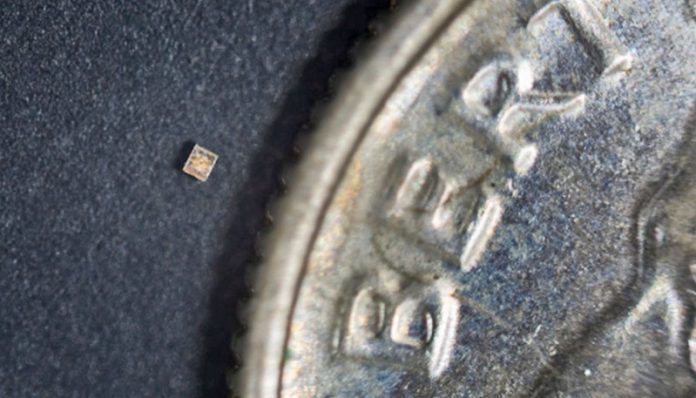
A team of smart engineers from Brown University has made a huge breakthrough with tiny sensors, each as small as a grain of salt.
Their research, shared in Nature Electronics, introduces a new way to send and receive data wirelessly using these microchips, potentially transforming how we monitor health and our environment.
Imagine tiny sensors, so small you can barely see them, working together like a team. These sensors are designed to be either worn like a sticker or even placed inside the body.
They work smartly, capturing important changes—like temperature shifts or detecting specific substances—and then, like messengers, quickly sending this information using radio waves.
What’s special about these sensors is how they communicate. They take inspiration from the human brain, particularly how neurons send information.
Instead of constantly talking, they stay quiet until something important happens.
This way, they save energy and don’t overwhelm the network with unnecessary chatter.
Jihun Lee, a key researcher on the project, explained that this approach is not just smart but also very energy-efficient. It avoids the need for all sensors to talk at once or for a central system to manage the conversation, making the network scalable and flexible.
This innovation opens up a world of possibilities, especially for medical applications. “We live in a world of sensors,” noted Arto Nurmikko, a leading professor in the study.
These tiny sensors could be the future of medical monitoring, allowing doctors to track a patient’s condition more closely than ever before, in a way that’s both unnoticeable and doesn’t interfere with daily life.
These tiny devices are powered wirelessly, meaning they don’t need batteries or plugs. They just need to be within range of a special signal that gives them the energy they need to operate. This makes them incredibly versatile and easy to use in various settings.
The journey to develop these sensors wasn’t easy. It involved a lot of computer simulations and trial and error in making the sensors.
This project builds on previous research that created a system called “neurograins,” aimed at understanding and interacting with brain activity through a network of wireless sensors.
The team has tested the system with 78 sensors and through simulations with up to 8,000 sensors, showing that it’s possible to collect data efficiently and with minimal errors, even when the sensors are not perfectly synchronized.
The next steps for the team include making the system even more power-efficient and finding more ways to use these sensors, not just in the brain but in other parts of the body and beyond.
Funded by the National Institutes of Health, this research is not just about creating new technology; it’s about opening doors to the future of healthcare and environmental monitoring, making it easier to keep an eye on what matters most.



